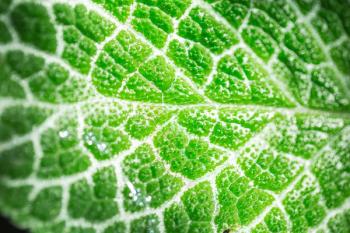Key Points
- A portable SERDS system enables real-time, on-site soil analysis at fine spatial resolution.
- SERDS overcomes fluorescence and daylight interference through shifted excitation laser technology.
- Field tests showed strong predictive accuracy for soil carbonate and organic carbon content.
- Laboratory validation confirmed the reliability of portable SERDS for both qualitative and quantitative soil measurements.
Introduction: New Tool Tackles Soil Analysis in the Field
A German research team has developed and tested a portable laser-based device that can analyze soil properties directly on farmland, eliminating the need for slow, lab-based testing. The study, published in the journal Analyst, was led by Kay Sowoidnich, Stefan Pätzold, Markus Ostermann, Bernd Sumpf, and Martin Maiwald from the Ferdinand-Braun-Institut (FBH), University of Bonn’s INRES department, and the Federal Institute for Materials Research and Testing (BAM) (1).
Their work focuses on using portable shifted excitation Raman difference spectroscopy (SERDS) to map soil carbonate and organic carbon content, both critical indicators of soil health (1,2). By applying SERDS directly in the field, the researchers achieved detailed chemical profiles across an active agricultural field in northeast Germany (1).
Precision Agriculture’s Data Gap
Modern precision agriculture depends on accurate, site-specific soil data. Traditional methods rely on lab analysis of composite soil samples taken from large areas, a process too coarse to capture fine-scale variability—often on the order of 10 meters—needed for today's advanced farm machinery (1,2).
“Portable SERDS helps fill this gap,” the authors explain. “It provides substance-specific data right where farmers need it, at the resolution required to guide decisions about fertilizer or liming” (1).
Why Raman Spectroscopy Struggles with Soil
Raman spectroscopy, which identifies molecular structures through laser light scattering, has been underutilized in soil science due to two challenges:
- Strong background fluorescence from organic matter and clay
- Daylight interference during field use
SERDS solves these issues by using two slightly shifted laser wavelengths around 785 nm. While the true Raman signals shift between these excitations, background signals do not. Subtracting the two spectra isolates the molecular fingerprint of soil minerals and organics (1,2).
On-Site Field Testing with Portable SERDS
The research team tested their portable SERDS instrument across a 480-meter stretch of agricultural land, taking 25 measurements to capture spatial heterogeneity. From 250 field-collected spectra, they identified nine soil minerals and organic carbon signals despite intense fluorescent backgrounds (1).
Using partial least squares regression (PLSR), they correlated Raman signals with lab reference values for key soil parameters. The system predicted calcium carbonate content with an R² of 0.86 and a root mean square error of cross-validation (RMSECV) of 2.49%. Predictions for soil organic carbon (SOC) were even stronger: R² of 0.89 with an RMSECV of just 0.32% (1).
Cross-Checking Field Data in the Lab
To validate their field findings, the team collected soil samples from each measurement point and re-analyzed them using a laboratory SERDS setup. The lab confirmed the major soil components detected in the field, although some minor constituents like spessartine and zircon appeared only in lab data due to probing more sample spots (1).
Importantly, the quantitative models for carbonate and SOC content held up under lab conditions. This confirms that the portable SERDS system delivers reliable on-site soil characterizations comparable to controlled laboratory measurements (1).
Unlocking Soil Variability Insights
Beyond measuring overall soil content, the SERDS instrument captured spatial variability across the field. “The ability to map calcium carbonate and organic carbon variations directly on-site is a key advantage,” the authors note. This spatial insight can help farmers fine-tune fertilizer and lime applications, improving both crop yield and environmental sustainability (1).
References
(1) Sowoidnich, K.; Pätzold, S.; Ostermann, M.; Sumpf, B.; Maiwald, M. Qualitative and Quantitative Soil Characterization on an Agricultural Field Using a Portable Shifted Excitation Raman Difference Spectroscopy Instrument. Analyst 2025. DOI: 10.1039/D5AN00178A
(2) Brown, G.; Solomatova, N.; Grant, E. Advancing Soil and Environmental Analysis with Dual-Wavelength Raman Spectroscopy and Machine Learning. Copernicus Meetings 2025, No. EGU25-13765. DOI: 10.5194/egusphere-egu25-13765






